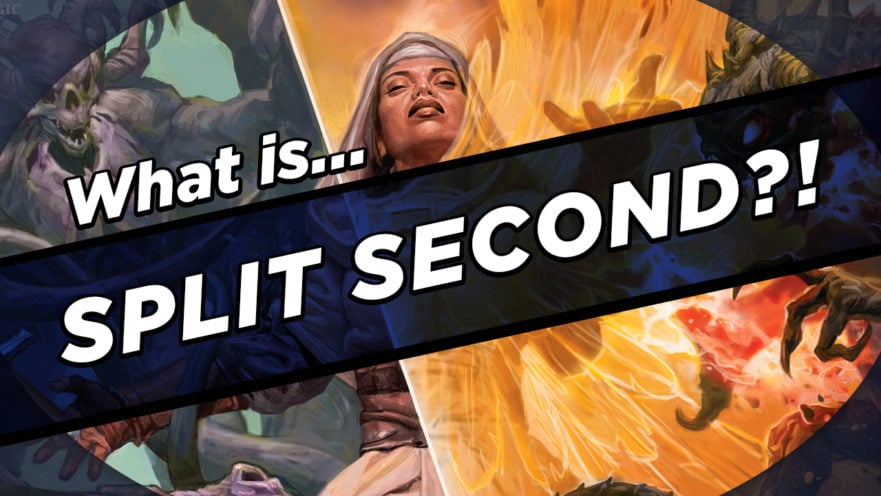As you’ve learned to play Magic: The Gathering, you’ve probably familiarized yourself with the instant and sorcery card types. These spells have a one-time effect — on your turn, and maybe on someone else’s.
But in the early days of Magic, there was a third spell type with short-term effects. Interrupts were like instants, but more powerful — you could only respond to them with other interrupts.
With the 6th Edition rules change, the interrupt card type was removed from the game. But years later, in a set that paid homage to Magic‘s past, the game’s designers created a new kind of spell that used the same timing rules as an interrupt. Responding to these spells instantly isn’t good enough — you’ll only have a split second!
What is Split Second?
Split second was first introduced in Time Spiral, and it’s been getting attention again thanks to Time Spiral Remastered.
When you cast a spell with split second, no one (including you) may cast another spell or activate a non-mana ability until that spell resolves. Anyone can still add mana or take special actions that don’t use the stack (like morphing a creature, or foretelling a card from your hand). Triggered abilities will also still trigger.
Simply put, you’re casting your spell so quickly that no one has a chance to respond to it. It makes counterspells irrelevant, since they can’t be cast to counter those spells. If you need to make something happen before your opponent can cast or activate something, that’s what this mechanic was designed to do.
Split second hasn’t been printed on many cards, but you may have seen some examples of it in your time playing Magic. Krosan Grip is a Commander staple due to its ability to destroy problem cards before an opponent can respond, and Angel’s Grace was a key ingredient in the Ad Nauseam combo deck in Modern.

